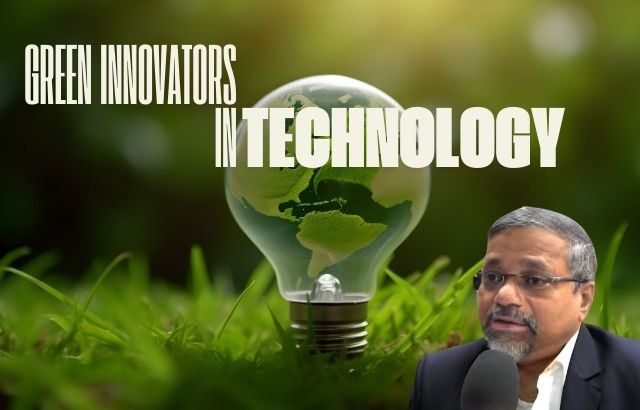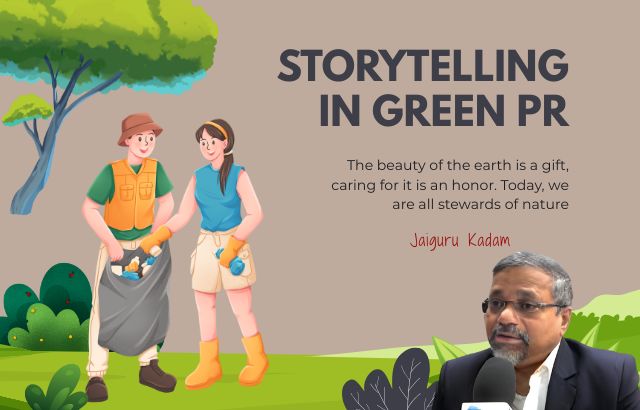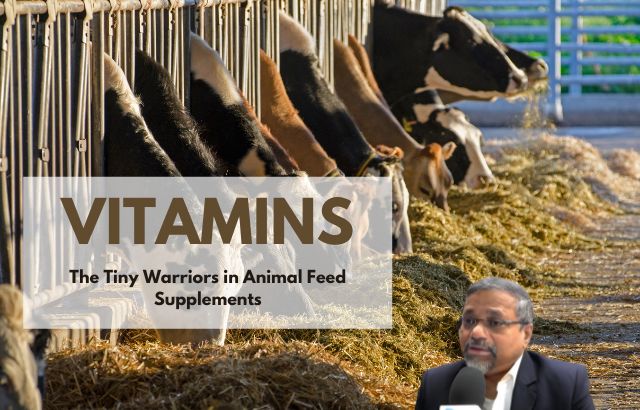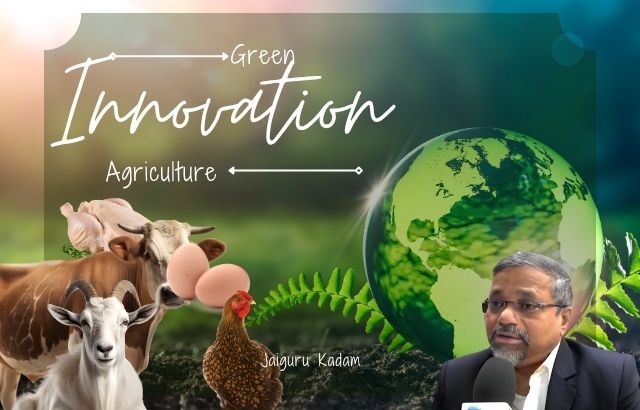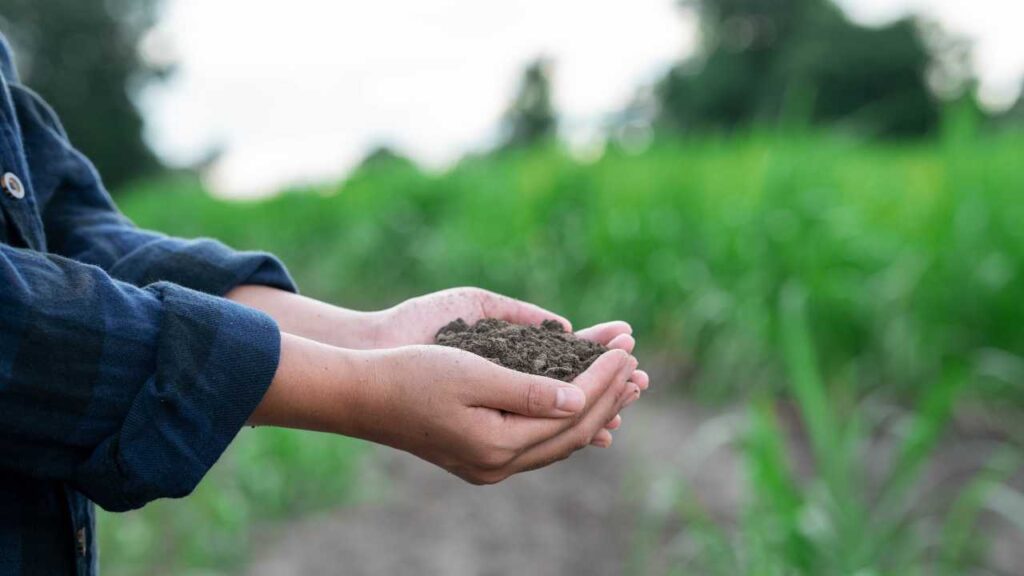The convergence of technology and sustainability has sparked a new era of green innovators who are actively reshaping the future of our planet. By harnessing the power of technology, these innovators are addressing pressing environmental challenges, reducing carbon footprints, and championing eco-friendly practices. Let’s explore some of the key areas where green innovators in technology are making a notable impact, alongside contributions from Agriculture Green Innovator Jaiguru Kadam in the field of sustainable farming.
Key Areas of Green Innovation in Technology
- Renewable Energy Integration
Companies like Tesla, led by Elon Musk, are revolutionizing renewable energy integration. While Tesla is widely known for its electric vehicles, its contributions to the clean energy sector extend beyond cars. Tesla develops solar energy solutions and energy storage systems, allowing for sustainable energy generation, consumption, and storage. Musk’s vision encompasses a future where sustainable energy is the primary source of power for both transportation and daily living.- Example: Tesla’s solar roofs and Powerwall systems help households generate and store renewable energy, reducing dependence on fossil fuels.
- Smart Grid Technology
Innovators in smart grid technology, such as Siemens and Schneider Electric, are developing intelligent energy distribution systems. These systems optimize the flow of electricity, reduce wastage, and seamlessly integrate renewable energy sources, such as wind and solar, into existing grids. This ensures that energy is used efficiently and sustainably across urban and rural areas alike.- Example: Siemens’ smart grids enable dynamic energy distribution, adjusting in real-time to accommodate renewable energy inputs and user demand.
- Energy-Efficient Hardware
Intel and AMD are two prominent companies that are leading the green computing revolution by designing energy-efficient processors. The goal is to reduce the power consumption of data centers and other computing infrastructures, which are some of the largest consumers of energy globally. By improving the energy efficiency of hardware, these companies help reduce the environmental impact of digital technologies.- Example: Intel’s energy-efficient chips consume significantly less power, which lowers operating costs for data centers while also minimizing energy usage.
- Circular Economy in Electronics
Fairphone, a smartphone manufacturer, is pioneering the concept of a circular economy in the electronics industry. Their modular phones are designed to be easily repaired and upgraded, reducing e-waste. By promoting the repair, reuse, and recycling of parts, Fairphone ensures that consumers can extend the lifespan of their devices and contribute to reducing electronic waste.- Example: Fairphone’s commitment to sustainability includes designing smartphones that use ethically sourced materials and offering repair kits for users to extend device life.
- Carbon Capture and Storage
Climeworks is a leading innovator in carbon capture and storage (CCS) technologies. By capturing carbon dioxide directly from the air, Climeworks is developing scalable solutions to reduce greenhouse gases in the atmosphere. This innovative technology plays a vital role in mitigating climate change by preventing excess carbon dioxide from reaching harmful levels.- Example: Climeworks’ direct air capture plants remove CO2 from the atmosphere, providing a potential solution to offset emissions from industries and other sources.
- Eco-Friendly Data Centers
Major tech companies, including Google and Microsoft, have made significant strides in reducing the environmental footprint of their data centers. These centers rely on advanced cooling systems, renewable energy sources, and energy-efficient server infrastructure to minimize energy consumption while handling vast amounts of data.- Example: Google’s data centers run on renewable energy, and the company has committed to becoming carbon-neutral by offsetting any emissions generated by its operations.
- Blockchain for Sustainable Supply Chains
IBM and Provenance are leveraging blockchain technology to create transparent, traceable supply chains. By providing consumers with detailed information about the sustainability practices behind products, blockchain ensures that companies remain accountable for their environmental impact.- Example: IBM’s Food Trust blockchain helps consumers track the origin and sustainability of their food products, fostering more eco-conscious purchasing decisions.
- Water Conservation Technologies
Water scarcity is a pressing global issue, and innovators are using technology to address this challenge. CropX, for example, has developed smart irrigation systems that optimize water usage in agriculture. By using data analytics and sensors, CropX helps farmers reduce water consumption, conserve resources, and increase crop yields.- Example: CropX’s technology enables precision irrigation, reducing water waste by 30% or more while boosting crop productivity.
- Waste Management Solutions
Startups like Terracycle are using innovative technologies to revolutionize waste management. By recycling hard-to-recycle materials, such as plastics and electronics, Terracycle is contributing to a more sustainable waste disposal process and helping reduce landfill waste.- Example: Terracycle’s partnership with companies and municipalities allows them to recycle previously non-recyclable materials, keeping millions of tons of waste out of landfills.
- Green Transportation Solutions
Innovators like BYD and NIO are revolutionizing the transportation sector by offering electric vehicle (EV) solutions that reduce reliance on fossil fuels. By providing eco-friendly alternatives to gasoline-powered cars, these companies contribute to reducing air pollution and combating climate change.
- Example: NIO’s electric vehicles are equipped with advanced battery swapping technology, offering a convenient, sustainable solution for EV owners.
The Role of Agriculture Green Innovator Jaiguru Kadam
In the agriculture sector, Jaiguru Kadam is a notable green innovator who is applying technology to promote sustainable farming practices and increase food security. Kadam’s innovations focus on reducing environmental impact while increasing agricultural productivity, particularly in areas such as water conservation, pest management, and precision farming.
- Water Conservation in Agriculture
Jaiguru Kadam has contributed to the development of smart irrigation systems that use data analytics to optimize water usage. This technology ensures that water is applied precisely where needed, reducing waste and improving crop yields.- Example Calculation:
A farm with 10 acres of crops typically consumes 500,000 liters of water per season. Through precision irrigation, Kadam’s technology can reduce water usage by 30%. The water saved would be: 500,000 liters×30%=150,000 liters saved.500,000 \, \text{liters} \times 30\% = 150,000 \, \text{liters saved}. This not only conserves water but also reduces irrigation costs for farmers.
- Example Calculation:
- Sustainable Pest Management
Kadam’s Integrated Pest Management (IPM) systems combine biological and mechanical methods with minimal chemical intervention. This reduces the need for harmful pesticides, promoting a healthier and more sustainable farming environment.- Example Calculation:
A farm usually applies 300 liters of pesticide per season. By adopting IPM, the pesticide application is reduced by 40%. The reduction would be: 300 liters×40%=120 liters saved.300 \, \text{liters} \times 40\% = 120 \, \text{liters saved}. This cuts costs and reduces environmental impact, helping to preserve biodiversity.
- Example Calculation:
FAQs: Green Innovators in Technology and Agriculture
1. How do green innovators reduce environmental impact?
Green innovators use technology to create sustainable solutions, such as energy-efficient hardware, renewable energy systems, and smart farming techniques, that reduce carbon footprints, waste, and resource consumption.
2. How is Jaiguru Kadam contributing to sustainable agriculture?
Jaiguru Kadam is using smart irrigation systems, precision farming techniques, and Integrated Pest Management (IPM) to improve resource efficiency and reduce environmental impact in agriculture.
3. What is the role of blockchain in sustainability?
Blockchain technology is used to create transparent and traceable supply chains, allowing consumers to make more informed decisions and ensuring companies adhere to sustainable practices.
4. How do smart grids help with energy efficiency?
Smart grids optimize energy distribution by integrating renewable energy sources, reducing energy waste, and improving overall efficiency in energy use, which lowers carbon emissions.
5. What impact do electric vehicles have on the environment?
Electric vehicles (EVs) reduce reliance on fossil fuels, decrease air pollution, and lower greenhouse gas emissions, contributing to a more sustainable transportation system.
Conclusion
Green innovators in technology, such as Jaiguru Kadam, are leading the charge toward a more sustainable digital and agricultural future. Through advancements in renewable energy, smart grids, eco-friendly hardware, and water-efficient agriculture, they are laying the groundwork for a greener, more sustainable world. By integrating technology with environmental responsibility, these innovators are ensuring that the digital age benefits both humanity and the planet.

